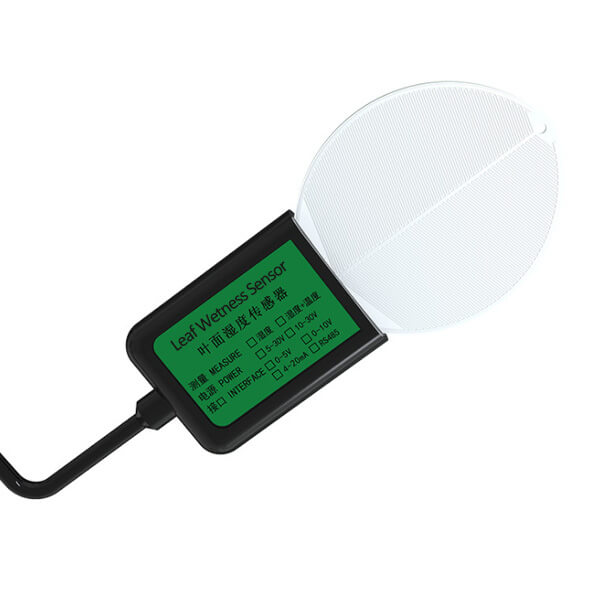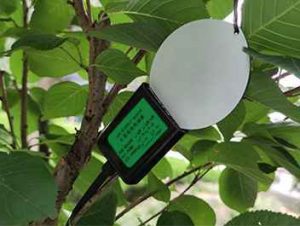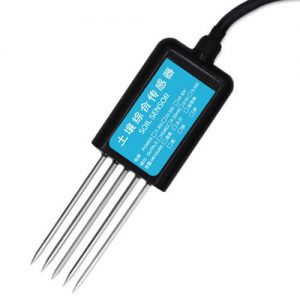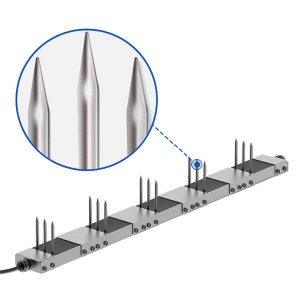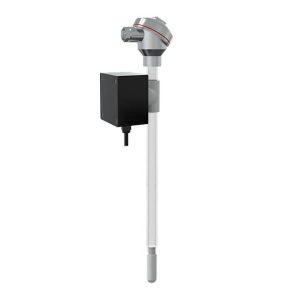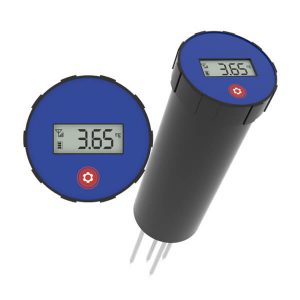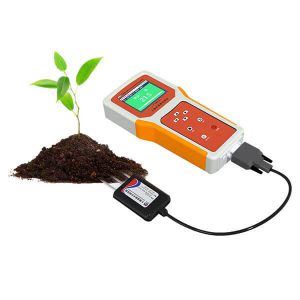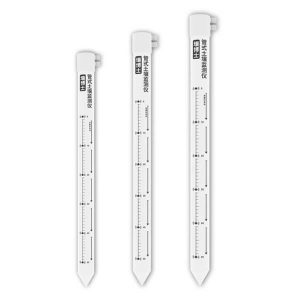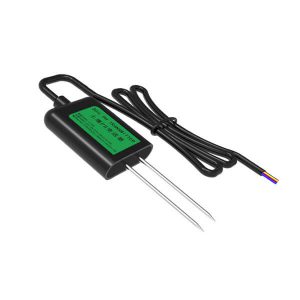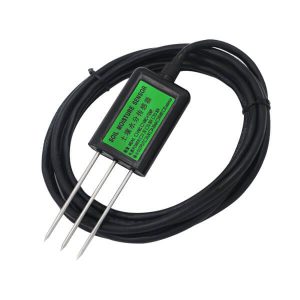Table of Contents With the development of technology, the Internet of Things (IoT) has become an indispensable part. It connects
Leaf Wetness Sensor
This RS-WS-N01-YM-1-EX leaf wetness sensor is standardized, calibrated, and designed to detect wetness and ice after installation. With denser leaf vein patterns on the surface, smaller droplets can be detected and the measurement is more sensitive. The sensor surface coating is non-hygroscopic, eliminating false wetness detection.
- Model: RS-WS-N01-YM-1-EX
- MOQ: 1 PCS
- Delivery date: within 24 hours
- Price: USD 31.50
About Renke Leaf Wetness Sensors
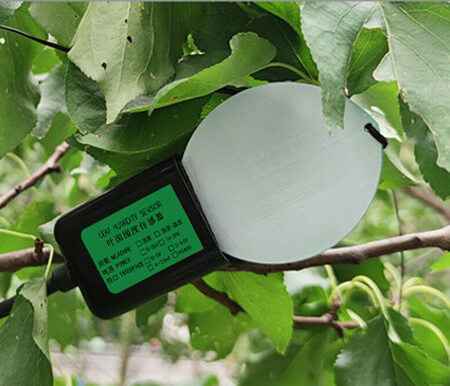
Description
This leaf surface wetness sensor working principle is to measure wetness through the change of the leaf surface dielectric constant. With good sensitivity, it can detect trace water or ice residues on the surface of leaves. The appearance is completely waterproof and can be used outdoors for a long time. Easy to use, widely used in greenhouses, laboratories, breeding, production environments, artificial climate rooms, and other plants or object surface humidity measurement.
Features
1. Simulate the surface characteristics of real leaves, quickly and accurately measure temperature and wetness.
2. The denser leaf vein patterns (15 lines/cm) can detect smaller droplets and the measurement is more sensitive.
3. High precision, fast response, and good interchangeability.
4. Epoxy resin encapsulation, waterproof and moisture-proof, IP67 protection level, long using life.
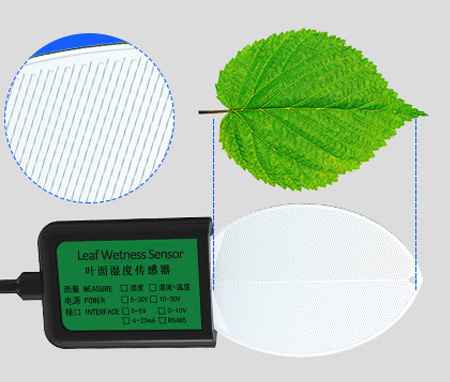
Parameters
Power supply: DC 5-30V
Maximum power consumption: 0.75W (12V DC power supply)
Working temperature: -40℃~+60℃
Temperature
- Range: -40~80℃
- Accuracy: ±0.5℃ (@25℃)
- Resolution: 0.1℃
Wetness
- Range: 0-100%RH
- Accuracy: ±5%RH (@25℃)
- Resolution: 0.1%RH
Protection level: IP67
Sealing material: black flame-retardant epoxy resin
Cable length: 2 meters, can be customized
Size: 45*15*123mm
Output signal: RS485
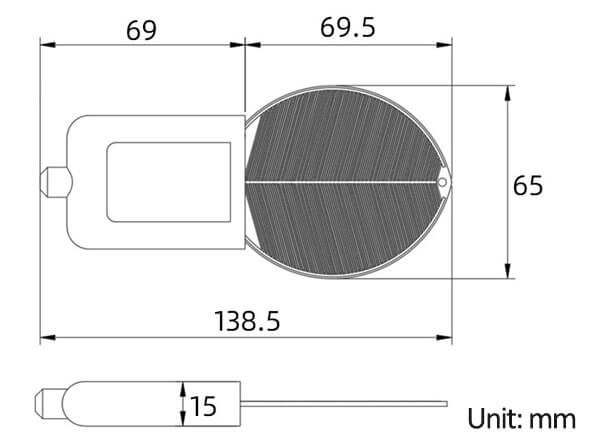
FAQ
Leaf wetness refers to the amount of dew and precipitation remaining on the surface. The level of leaf wetness has an important influence on plant infection pathogens. When the plant leaf surface wetness is too high, it will increase the breeding probability of field bacteria and increase the risk of leaf infection. Once the plant is infected with the disease bacteria, the disease bacteria will damage the leaf surface structure, which is not conducive to the growth and development of the plant.
The leaf surface wetness sensor is an important tool for observing and studying the leaf surface wetness, preventing diseases and insect pests, and controlling sprinkler irrigation. The leaf surface wetness sensor can accurately measure the leaf surface wetness, and can monitor the trace moisture or ice crystal residues on the leaf surface.
Place the leaf wetness transmitter next to the crops or leaves, use a non-metallic wire to pass through the small hole in the front of the sensor, hang it on the branches of the tree, and fix the sensor on the branches or stems with iron wires. The angle of inclination and orientation are close to those of real plants. The ideal leaf wetness sensor should be installed at a distance of more than 1 meter from the ground. It can be hung above the plants and avoid direct sunlight as much as possible.
Predict when to spray crops.
Quantify the water storage in the plant canopy.
Research and monitor crop leaf diseases, including rust and fusarium wilt.
Clean the equipment at least once a month during continuous work, mainly to clean the ice, snow, dust, etc. deposited on the surface of the equipment.
When used in a normal environment, we will provide you with a two-year warranty.
This leaf wetness sensor uses rs485 signal transmission, and the measurement data can be directly uploaded to the free cloud platform we provide you. You can view the data in real-time remotely through a computer, mobile phone, or WeChat.
Other sensors
Related blogs
The commonly used communication method for data acquisition and control is RS485. RS485 is a general communication standard. It can
Table of Contents What are meteorological sensors? Meteorological sensors are specialized equipment for understanding and measuring climate change. These sensors
The main purpose of environmental monitoring is to provide data on environmental quality and changing trends to ensure the safety
The weather sensors are the sensing end of the weather station and collect various weather-related data. The weather station can
Soil moisture sensors are also known as soil moisture meters. It is mainly used for measuring soil volumetric water content,
A greenhouse is a closed environment that provides optimal conditions for plant growth and promotes plant growth by controlling indoor
Table of Contents What is IoT? IoT is the “Internet of things“. It is an extended and expanded network based
What is smart farming? Smart farming is the application of Internet of Things technology to traditional agriculture, using sensors and
The weather station can provide users with comprehensive weather information over the years. Regular maintenance of weather stations is an

